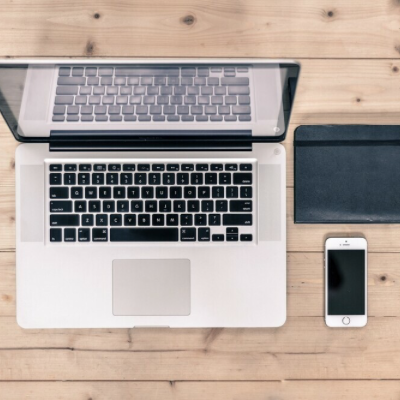I’m going to let you in on a little secret that might just transform the way you work: a well-organized workspace can work wonders for your productivity. It’s not just about having a tidy desk; it’s about creating an environment that fosters focus and efficiency. You might be asking, ‘How can a few filing folders and a clean desk make such a difference?’ Well, it’s not just about the physical arrangement—it’s also about the mental clarity that comes with it.

This isn’t just about having a spotless desk. It’s also about the psychological benefits that a structured environment can offer. Imagine walking into a workspace where everything has its place. That level of organization can significantly reduce the time you spend searching for things, allowing you to concentrate on the tasks that matter. Moreover, studies have consistently shown that clutter can increase stress levels, which in turn, can hamper productivity. By creating a workspace that minimizes distractions, you’re setting yourself up for a calmer, more productive workday.
By the way, understanding the relationship between clutter and stress levels is crucial. It’s not an overstatement to say that a cluttered desk can lead to a cluttered mind. When your workspace is overrun with unnecessary items, your brain has to work overtime to filter out the mess and focus on the tasks at hand. By keeping your environment streamlined, you’re giving your brain the break it deserves and the focus it needs to tackle your workload efficiently.
Your Workspace, Your Rules: Personalizing Your Productivity Hub
So you’re keen on crafting a space that doesn’t just look good, but works hard for you too. It’s not a one-size-fits-all deal; your workspace should be as unique as your working style. Let’s figure out how to make your area fit your personal workflow like a glove.
Take a moment to think about how you work. Do you thrive on visual cues, or does a list do the trick? Assessing your habits is the first step towards personalizing your productivity hub. Choose something that resonates with you, and integrate a system like Kanban for visual planning or Getting Things Done (GTD) for breaking tasks into actionable items.
Next up is furniture, but it’s not just about choosing the swankiest chair. Ergonomic furniture is a game changer for your health and productivity. You’re going to spend a significant chunk of your day here, so invest in pieces that support a comfortable posture and encourage movement.
Lastly, let’s talk about striking that tricky balance between a workspace that’s easy on the eyes and one that gets the job done. Sure, you might love the idea of a minimalist desk, but if your job requires quick access to a dozen different tools, that’s not going to cut it. Choose a look and layout that enhances your workflow while keeping things inspiring.
What Is Kanban?
Kanban is a visual workflow management method designed to help teams visualize their work, limit work-in-progress, and maximize efficiency or flow. Originating from Toyota’s manufacturing process, Kanban has been adapted for knowledge work and software development.
Core Principles
- Visualize Work: By representing work items on a Kanban board, typically using cards, teams can easily see the status of each task. Columns on the board represent different stages of the process (e.g., To Do, In Progress, Done).
- Limit Work in Progress (WIP): Setting limits on the number of tasks that can be in progress at any one time ensures that teams focus on finishing tasks before starting new ones, which helps to identify bottlenecks and maintain a steady flow of work.
- Focus on Flow: The aim is to keep work items moving through the process efficiently. Teams track metrics like cycle time (how long it takes for a task to move from start to finish) and lead time (how long it takes for a task to be completed after it is requested).
- Continuous Improvement: Teams regularly review their process and outcomes to identify areas for improvement. This might involve adjusting WIP limits, changing the way work is visualized, or refining the process steps.
Benefits
- Transparency: Everyone involved can see the status of the work at any time, which fosters collaboration and communication.
- Flexibility: Kanban is highly adaptable and can be implemented incrementally without drastic changes to existing processes.
- Efficiency: By focusing on completing work items and minimizing multitasking, teams can deliver value more quickly and consistently.
- Improved Quality: Continuous review and improvement help to identify issues early and enhance overall quality.
Application
Kanban is used in various industries, particularly in software development, IT operations, and project management. Its visual and adaptive nature makes it suitable for managing both simple and complex workflows, supporting teams in delivering high-quality results efficiently and effectively.
Organizational Techniques: From Chaos to Clarity
So, you want to turn your workspace from a stress-inducing mess into a model of efficiency? Here’s where the rubber meets the road. Welcome to the world of organizational techniques that’ll guide you from chaos to clarity.
First up is a system you might not have heard of, but it’s a game-changer: the 5S methodology. It’s a Japanese concept that stands for sort, set in order, shine, standardize, and sustain. The idea is to eliminate anything unnecessary from your space, arrange what’s left in a logical way, keep the area clean, establish standards, and, finally, maintain the new order. Your workspace isn’t just a place to work; it’s a machine that should run as smoothly as possible.
However, this isn’t just about physical clutter. Your digital world needs a detox, too. Digital decluttering means sifting through your computer’s desktop, tidying up your files, and unsubscribing from those pesky email lists that add zero value. A clean virtual desktop can save you from mental clutter and tech-induced stress.
Now, don’t forget about tools that can work double-time for you. Time management apps and software? Absolutely. You’ll wonder how you ever got along without them. These tools can help you keep track of deadlines, set reminders, and prioritize your to-dos in a more structured way.
The final piece of the puzzle is finding storage solutions that tick all the boxes – they need to be clever, adaptable, and accessible. Think about using cloud services for digital files or desk organizers that keep your necessities within arm’s reach. But remember, storage isn’t just about hiding things away; it’s about making sure everything has its own spot and can be found in seconds.
The 5S Methodology Explained
The 5S methodology is a systematic approach to workplace organization and standardization aimed at improving efficiency, safety, and productivity. Originating from Japanese manufacturing practices, 5S stands for five Japanese words: Seiri, Seiton, Seiso, Seiketsu, and Shitsuke, which translate to Sort, Set in order, Shine, Standardize, and Sustain.
- Sort (Seiri): This step involves identifying and removing unnecessary items from the workplace. The objective is to declutter and eliminate waste, making it easier to find necessary tools and materials. Employees are encouraged to evaluate the necessity of each item and retain only what is essential for daily operations. This reduces the chances of errors, enhances space utilization, and simplifies the working environment.
- Set in Order (Seiton): After sorting, the next step is to organize the remaining items logically. Tools, equipment, and materials should be arranged in a manner that minimizes wasted motion and time. This might involve labeling, color-coding, and using visual management techniques to ensure that everything has a designated place. The aim is to create a workflow where everything is easily accessible, reducing search time and improving efficiency.
- Shine (Seiso): This step emphasizes cleanliness and maintenance. Regular cleaning schedules are established to keep the workplace tidy and equipment in good working condition. By maintaining a clean environment, potential issues can be identified and addressed promptly, preventing minor problems from escalating. A clean workspace also promotes safety and reduces the risk of accidents.
- Standardize (Seiketsu): Standardization involves establishing norms and procedures to maintain the first three S’s. It ensures consistency and uniformity in workplace practices. Employees are trained to follow these standards, which can include checklists, protocols, and visual cues. Standardization helps in sustaining the improvements made, as everyone understands and adheres to the established processes.
- Sustain (Shitsuke): The final step is about maintaining and improving the 5S practices through discipline and continuous improvement. It requires a cultural shift where employees are committed to adhering to the established standards. Regular audits, reviews, and training sessions can help reinforce the importance of 5S and ensure ongoing compliance. Sustaining 5S requires leadership support and active participation from all employees.
The 5S methodology offers numerous benefits, including reduced waste, enhanced productivity, improved safety, and higher employee morale. By fostering a disciplined and organized work environment, 5S can lead to more efficient processes, better quality products, and increased customer satisfaction. It is a foundational element of lean manufacturing and continuous improvement practices, making it a valuable tool for any organization seeking operational excellence.
All set with organizing? Great! But don’t rest on your laurels; now it’s time to keep that momentum going. That leads us right into the next section, where I’m going to cover maintaining your productive sanctuary for the long haul.
Maintaining Your Productive Sanctuary: Tips for Long-Term Success
Now that you’ve established a space that’s primed for productivity, it’s crucial to keep it that way. Let’s talk about creating habits for lasting order and efficiency in your workspace.
First up, set a time each week for a workspace tune-up. It doesn’t have to be long; even 15 minutes can make a difference in maintaining the organization you’ve worked hard to achieve. During this time, refile papers, clear out your digital trash, and put items back in their dedicated spots.
Incorporating mindfulness into your daily routine can also be a game-changer. Before you finish work each day, take a few minutes to reset your space. This habit ensures you’re greeted with a clean desk each morning, which is more inviting and less distracting.
Discipline plays a big role here. Resist the urge to let clutter accumulate. It’s much easier to manage if you tackle it regularly, rather than waiting for it to become overwhelming. Remember, the state of your desk can reflect and influence the state of your mind.
Lastly, don’t forget that your needs may evolve. Reassess your workspace periodically to ensure it still serves your productivity goals. If you find something isn’t working for you anymore, don’t hesitate to switch things up. Your workspace should be as dynamic as your work life!
I really hope that you find these suggestions helpful for maintaining a workspace that doesn’t just look good, but also supports your best work. A tidy space can lead to a clear mind and outstanding productivity. Keep at it, and enjoy the benefits of your hard-maintained order!
How do you stay organised? Let me know in the comments
All the best
Tony
Are you wanting to break free from the 9-5 grind of your job? Want to start your own online business and take back your time freedom? Then you need to join Wealthy Affiliate! Learn how to build a successful online business from experts TODAY. Click the banner below to get started
I am an affiliate for Wealthy Affiliate. If you purchase a membership through my link I will make a small commission at no extra cost to you. Read my review of Wealthy Affiliate here.

Hi, my name is Tony and I’m the founder of Free From The Boss. I have been involved in affiliate marketing for a few years now and have made a success out of building online businesses. My aim with this website is to help you build and grow a successful online business for yourself and break free from your boss!


